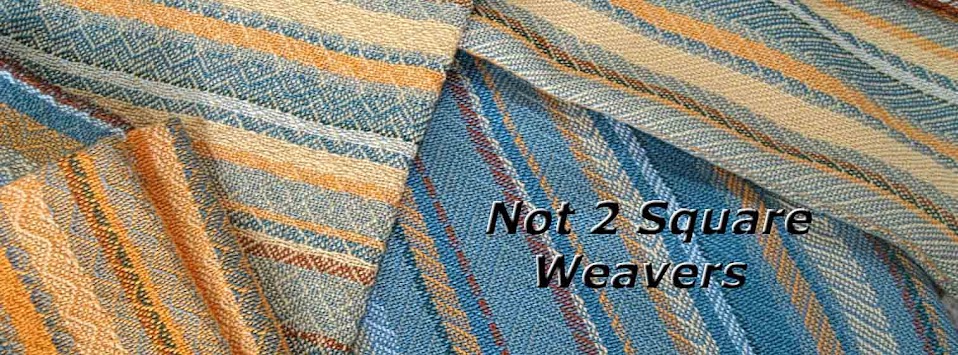
This photo is a good one to enlarge to look at the details of the weft in this rather solid and weighty piece.
The next step is to cut lengthwise between the warps with a rotary cutter and voila, you have chenille yarns.
The last step will be to weave this handwoven chenille into a rug. Twice woven and twice the fun.
Because I was interested in finding articles about this process, I went through my stash of Handwoven, Weaver's and Praire Wool Companion magazines. I'll bet the directions can be found in Spindle, Shuttle and Dyepot, but I didn't get those out to look. Here is a little bibliography for those of you who may find yourself with stash that is too good to throw away, but not good enough to weave with. Turn it into chenille!
Gaustad, Stephenie. "Do-It-Yourself Chenille". Handwoven. Sept./Oct. 1992: pp.62-64.
Piroch, Sigrid. "A Plushy Mat for a Cat". Handwoven. Sept./Oct. 1996: pp. 53-55.
Xenakis, David. "Yarn for the Weaving". Prairie Wool Companion. Issue 7: p21.
While we are on the subject of chenille, Gus Young showed us her masterpiece in progress. She had two different weights of white rayon chenille yarn. After winding warp chains alternating both yarns, she soaked them in soda ash and painted them with fiber reactive dyes. The darkest threads are teal - then she just kept added more water to get a lighter and lighter color. This is the backbone of a chenille shawl - weft will be teal rayon and cotton. The loom is a Gilmore (of course)!
An interesting feature of this photo is the way Gus has tied bouts of her warp to the back beam using texolve heddles. She loops texolve around a dowel tied to the back beam and then knots bouts of her chenille and forms a larks head around that knot to secure it to the back beam.
During the meeting we talked about fringes on a chenille piece. Most people twist them first before washing. We are always on the lookout for good ideas, so if you (reader) have any good tips, please add them to our comment section.




2 comments:
Thanks for sharing the information on chenille yarns. I've read about them, but I've never tried to make them myself. It's an interesting process.
Hi. Love your description and photos about making chenille yarn and using it to make a rug. We are going to have a guild challenge in January to create a "twice-woven rug" using thrums, fabric, or old stash yarns. May I please use your photos in our guild newsletter and our guild website https://redwoodgfa.org if I make it clear where they came from and point to this blog article for more information?
Thanks in advance for your consideration!
Trudie Folsom, Program Committee
Redwood Guild of Fiber Arts
Post a Comment